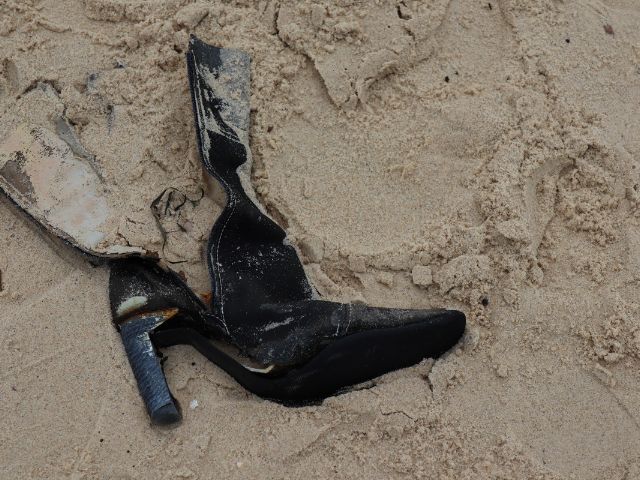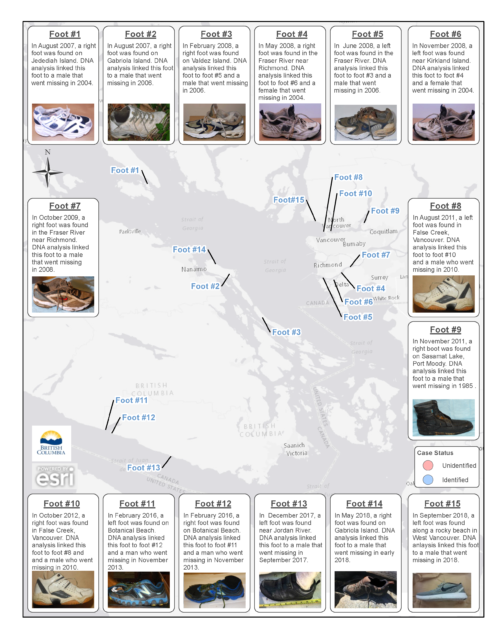
No. That’s not a typo. It is a play on words, though. However, maybe there is also an app for found severed feet. Who knows? All I know is that, until a recent Vox article, I had no idea disembodied feet “routinely wash ashore” in the Pacific Northwest.
“It turns out that severed feet washing up on this coastline is, in fact, A Thing,” Umair Irfan, the article’s author, wrote.
Say what? What’s up with that? That’s what the Vox article set out to enlighten readers about, with the comforting (?) assurance, “Don’t be alarmed.”
My first reaction was, “Too late. I’m alarmed. Very alarmed.”
My overactive imagination was thinking it sounded like something straight out of a horror movie. However, was it actually the work of some depraved real-life serial killer? Had he been caught, and that’s why there was no cause for alarm?
Because why else would body parts wash ashore if not due to nefarious means? My brain could not come up with a benign explanation for unsuspecting beachcombers making such gruesome discoveries with any kind of regularity.
Some suggested “remains of plane crash victims,” but Vox said that wasn’t it either. So what the heck was causing it? Let’s unpack this issue.
The Severed Feet of the Salish Sea
The Vox article was inspired by a report from the Times Colonist about a shoe found in July on Gonzales Beach in Victoria, B.C., which was confirmed to contain human remains. Such a discovery hadn’t happened in a while, but this part about how often it has happened caught my eye:
“A series of shoes and human remains were found on the Pacific coast between 2007 and 2018, including six shoes around Vancouver Island. Fifteen separate shoes with remains have since been linked to people who lost their lives in the water. “
Vox had previously spoken to Kathy Taylor, a former forensic anthropologist at the Seattle-Tacoma coast of Puget Sound’s King County Medical Examiner’s Office, about the issue. Basically, it’s “a consequence of having a densely populated area on the coast.”
Suicides and drownings are common “when people gather around any body of water.” The Pacific Northwest coastline boasts a healthy multi-million-person population. And “as shoreline populations go up, the number of water mishaps also increases.”
But why do bodies seem to congregate in the Salish Sea?
Parker MacCready, an oceanography professor at the University of Washington, explained it has to do with ocean surface currents and wind. The prevailing winds in the Salish Sea are west to east, “so floating stuff in this part of the Pacific gets blown to the coast effectively.”
The British Columbia Coroners Service Map of Found Feet

But the eye-opening humdinger was the British Columbia Coroners Service Map of Found Feet that Vox shared. A quick search easily pulled it up on the Special Investigations page on the coroner’s website. It pinpoints all the locations where severed feet have been found, including photos of the shoes and data about them.
There’s a small “Case Status” legend with a red circle indicating unidentified remains and a blue circle indicating identified. Happily, all 15 of the found-foot cases on the map have been identified, helping to close missing person cases.
The Grim Reason So Many Severed Feet Are in Tennis Shoes
One thing that sticks out about the photos of the shoes on the map is how many are tennis shoes. Or maybe it stood out because Vox specifically addressed that too, so my brain was already primed to notice it.
They turned to Gail Anderson, co-director of the Center for Forensic Research at Simon Fraser University in British Columbia, for answers. She explained, “Tennis shoes also keep decaying feet in a neat package rather than letting toes and heels disperse, and footwear protects feet from hungry sea creatures, which end up gnawing on other exposed areas like ankles instead.”
She pointed out that’s why feet aren’t washing up in stilettos or flip-flops. Plus, tennis shoes are pretty buoyant, which helps them being carried to shore.
But does that mean if you do find a stiletto or flip-flop that it could’ve belonged to someone who met their end in the water? Or is it a matter of a person forgetting their shoe(s) after a visit to the beach? I don’t know, but if I ever find a shoe on the beach now, that’s the first thing I’ll think about.
But why so many feet and not other body parts?
Anderson also had an explanation for why it’s feet and not whole bodies —or other body parts— washing up. It has to do with something called “disarticulation,” which is coming apart at the joints. Apparently, bodies “naturally disarticulate,” especially hands and feet, “after soaking in the ocean for a while.”
Check-In
Have you ever found a shoe on the beach? (Hopefully sans a foot if you have.)
Courtney Mroch is a globe-trotting restless spirit who’s both possessed by wanderlust and the spirit of adventure, and obsessed with true crime, horror, the paranormal, and weird days. Perhaps it has something to do with her genes? She is related to occult royalty, after all. Marie Laveau, the famous Voodoo practitioner of New Orleans, is one of her ancestors. (Yes, really! As explained here.) That could also explain her infatuation with skeletons.
Speaking of mystical, to learn how Courtney channeled her battle with cancer to conjure up this site, check out HJ’s Origin Story.

I’ve found a shoe on the beach but never one with remains inside! Eeeek!
OMG, Vera, I misread your comment at first and about gave myself a heart attack! lol